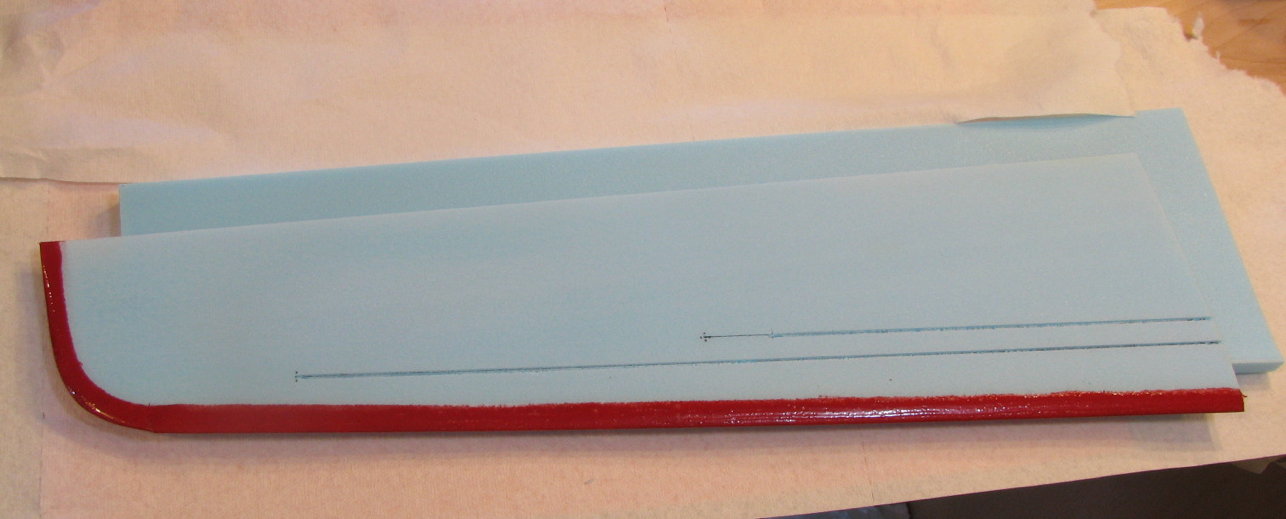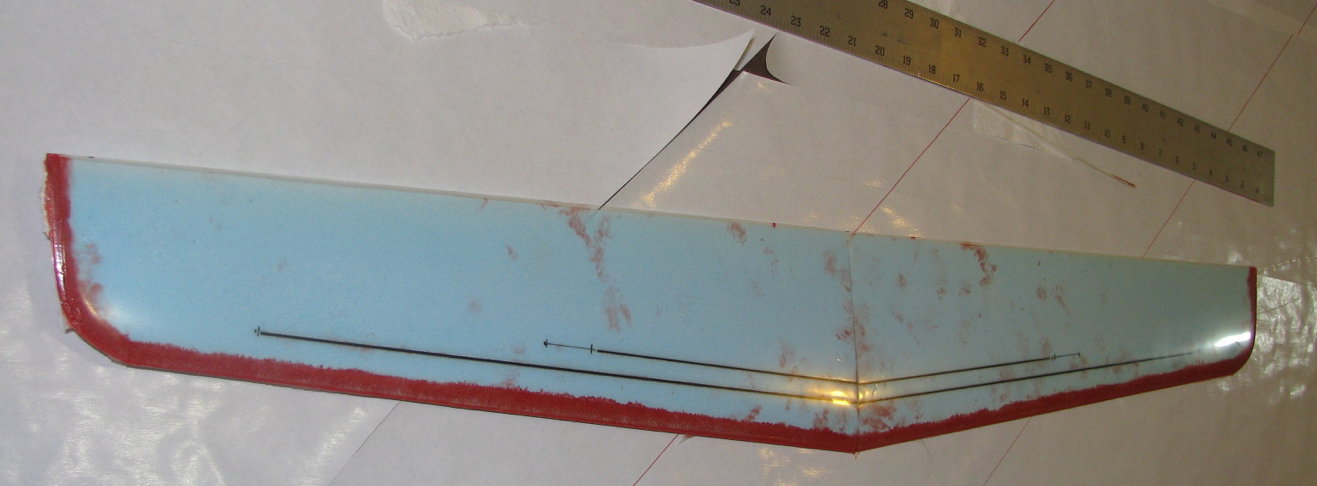TheAviator
Well-Known Member
- Joined
- Jan 18, 2009
- Messages
- 935
- Reaction score
- 122
Getting back on the actual building horse a little, so Bob and I made a couple of small foam core wings to get some practice. This is the fourth set of wings I've made this way, and it definitely gets easier as you go. Anyways, on to some specifics.
I don't have any pictures of the core-cutting process, but the foam cores were made using a drop-weight hot wire cutter. We tried to make 3 sets of cores, but ended up with only one full set of usable cores and one extra set of tip cores. Rather than having the tip cores just sit around, we decided to use them for practice with some new techniques.
First new technique that we were working on is using a live kevlar hinge. Normally, it is necessary to cut the wing apart and face the flaps before you lay everything up, but I wanted to try it this way, and if necessary I will post-face the flaps. You can see me peeling off the waxed paper we used as a transfer with 3M77 spray adhesive.
Using the same waxed paper/3M77 technique, we laminated a layer of kevlar and .75oz fiberglass, both on the bias, for the leading edge. Using the wondrous properties of composite cloth, we were able to work the strip around the leading edge, and, with a fair amount of effort, get it to lay flat around the compound curve tips.
To get a little color on the wings, a very light coat of regular Krylon paint was sprayed on the release films. This was allowed to dry, and the the films were 3M77'ed to .75oz fiberglass cloth, which was cut out in the same shape as the release film.
Finally, all of the cloth was wet out with laminating epoxy resin. The leading edge and hinge were wet out with an acid brush, and a small paint roller was used on the skins. We laid the skins over the foam cores with a healthy overlap with the leading edge. Everything was slid into the vacuum bag with some breather. We applied vacuum and weighted the wings between the foam shucks to keep everything straight.
I've attached pictures of the process. I didn't get anything while we were using epoxy, as there were no free hands. The final, untrimmed/unsanded wings weight 14.7g total. It'll probably drop sub-14g trimmed and sanded.








I don't have any pictures of the core-cutting process, but the foam cores were made using a drop-weight hot wire cutter. We tried to make 3 sets of cores, but ended up with only one full set of usable cores and one extra set of tip cores. Rather than having the tip cores just sit around, we decided to use them for practice with some new techniques.
First new technique that we were working on is using a live kevlar hinge. Normally, it is necessary to cut the wing apart and face the flaps before you lay everything up, but I wanted to try it this way, and if necessary I will post-face the flaps. You can see me peeling off the waxed paper we used as a transfer with 3M77 spray adhesive.
Using the same waxed paper/3M77 technique, we laminated a layer of kevlar and .75oz fiberglass, both on the bias, for the leading edge. Using the wondrous properties of composite cloth, we were able to work the strip around the leading edge, and, with a fair amount of effort, get it to lay flat around the compound curve tips.
To get a little color on the wings, a very light coat of regular Krylon paint was sprayed on the release films. This was allowed to dry, and the the films were 3M77'ed to .75oz fiberglass cloth, which was cut out in the same shape as the release film.
Finally, all of the cloth was wet out with laminating epoxy resin. The leading edge and hinge were wet out with an acid brush, and a small paint roller was used on the skins. We laid the skins over the foam cores with a healthy overlap with the leading edge. Everything was slid into the vacuum bag with some breather. We applied vacuum and weighted the wings between the foam shucks to keep everything straight.
I've attached pictures of the process. I didn't get anything while we were using epoxy, as there were no free hands. The final, untrimmed/unsanded wings weight 14.7g total. It'll probably drop sub-14g trimmed and sanded.























